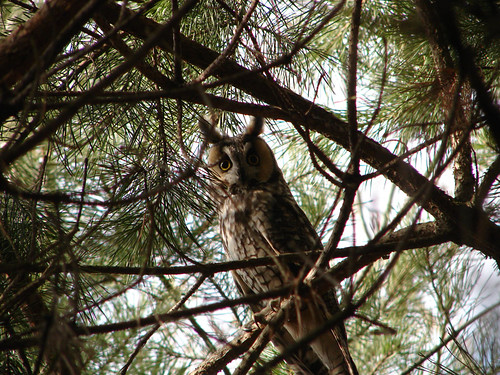 I stuck toothpicks in my eyes to stay awake for Stewart and Colbert last night, hoping for some good humour and insight -- some fake insight at least. Not much to be found there these days, though Jason Jones' report on two lunatics (one trying to give guns to teachers and one trying to give students Kevlar textbooks) was funny and smart. Meanwhile, in what passes for reality, we still don't know what caused the Big Stink in the Big Apple yesterday, but the great bloodshot orb of the media has moved on to cover the U.S. air strike against al Qaeda in Somalia and the oil dispute between Russia and Belarus.
I stuck toothpicks in my eyes to stay awake for Stewart and Colbert last night, hoping for some good humour and insight -- some fake insight at least. Not much to be found there these days, though Jason Jones' report on two lunatics (one trying to give guns to teachers and one trying to give students Kevlar textbooks) was funny and smart. Meanwhile, in what passes for reality, we still don't know what caused the Big Stink in the Big Apple yesterday, but the great bloodshot orb of the media has moved on to cover the U.S. air strike against al Qaeda in Somalia and the oil dispute between Russia and Belarus. So why am I thinking about Easter Island? Today's NY Times fas an interesting piece by Larry Rohter on the issue of whether to restore the giant stone moai on Easter Island. Although about 50 of these large familiar gods have been restored over the years, hundreds more remain scattered around the island. The trouble is that it costs upwards of $500,000 to restore each one and many Easter Islanders feel that enough have been restored to sustain a healthy tourist industry. In fact, it seems that 45,000 visitors a year is already straining the islands resources.
Rohter's article describes the conundrum nicely, but fails to explain why there are hundreds of broken moai scattered around the island in the first place. For this information, we can turn to Jared Diamond's book, Collapse: by deforesting the island in order to build these things while struggling to grow food for up to 30,000 people, the islanders essentially depleted the soil and used up their primary source of fuel. Competing tribes built the moai to appease the gods in order to "improve" food production. As resources grew scarce, it became easier to destroy your neighbor's moai and harder to build new ones. Diamond provides a wealth of evidence on the island's population growth, deforestation and subsequent food production problems.
Fearing for the sustainability of their island (and probably wanting to use the land for other purposes), modern Easter Islanders have no desire to restore all of the old gods so that foreigners can gawk at "old stuff". There is a good deal of irony and powerful metaphor here, ya think? Diamond thinks to so, also, and views Easter Island as a microcosm of humanity's struggle on this planet. The fact that some of us want to waste more resources to raise up hundreds of pieces of rock on a remote island (while others tear down "gods" like the giant statue of Saddam and the Bhuddas in Afghanistan) shows shows how far we haven't come.
The fact is, hundreds of old broken moai will teach us more about Easter Island -- and ourselves -- if we just leave 'em alone.




